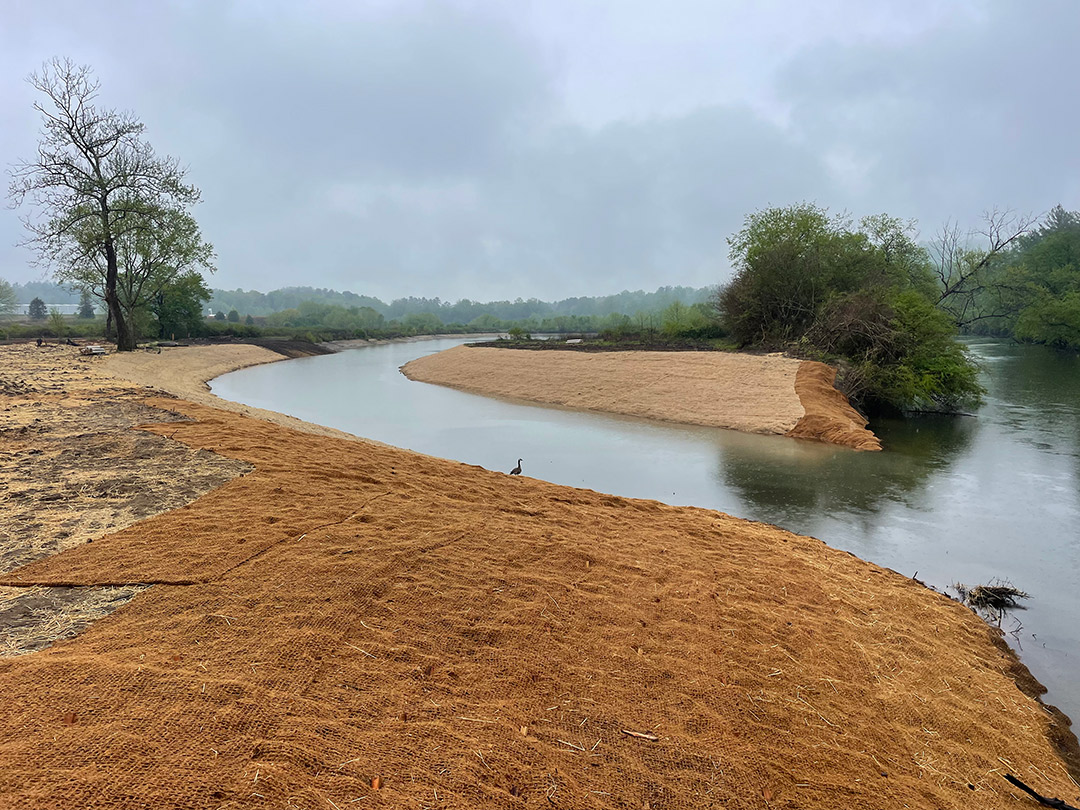What are “Ecosystem Services” and how are they changing land-use planning?

By Torry Nergart, Stewardship Manager at Conserving Carolina.
The history of the American Conservation movement is divided into eras, and like most movements towards a better future, Conservation’s beginnings were a reaction to negative events. The Era of Exploitation, a time of wanton resource extraction and immiseration, started with the violent colonization of these lands around the 1550’s and lasted until around 1950, thereabouts. The creation of our National Forest System, the reserving of range lands, the creation of parks and monuments, the creation of the Environmental Protection Act, all led from our collective visceral reaction to our own environmental destruction. Some would argue that the Era of Exploitation is still ongoing- with the continued unnecessary use of fossil fuels, disregard for endangered plant species in mining Lithium, to the removal of all life from the geopolitical boundary lines in the Texas desert, to the continued location of pollutive industries in communities of color, the examples are many that demonstrate humans who have power and capital are allowed blatant disregard for human life and all life forms.
Yet we still, as a society, lumber towards a genuine paradigm shift in how we relate to Land. Some of us will have to be dragged kicking and clawing towards a more environmentally sustainable future, some are way ahead. Our cultural fetishization of private property, and its dogma of caring not for those downstream, downwind, and next door is fading. It a tired narrative, spawned from a dark colonial past, that says, “I can do whatever I want, whenever I want, to things that I own.” This historically has not just applied to land and its living natural resources, but also people. It is a way to start thinking about other living things as possession, and no long journey to arrive at dehumanizing and life-devaluing thoughts and actions. And just like how no one wants to live next to an open pit or a car junkyard, not many people want to be next to this kind of toxic person, who from no matter what class or station in Life, wants to exert dominance and control, with freedom from its consequence.
Toxic people and toxic ideologies are ripe for abandonment. Try it today! Each step forward, we are arriving at a place where constructive forethought in land use involves consideration of our environment and all its working parts. Because without that consideration, the negative consequences will directly interfere with an individual’s freedoms.
Land-use planning is a great tool for communities and is a great reflection on democratic principles. North Carolinians enjoy (and so do its visitors) a constitutionally-protected right to clean water, open space, scenic beauty and common natural heritage (Art. XIV, Sec. 5, if you want to read along). Having a right and exercising a right are two different things though. In motion, conservation looks like community coming together, decision-making that is considerate of all life, and creating actionable plans towards sustainability. One term that is becoming more used in land use planning is “ecosystem services,” a way of quantifying of what Nature contributes to our lives. Or, as the United Nations sponsored Millennium Ecosystem Assessment calls it, benefits that people obtain from ecosystems that are essential for human well-being. This term recognizes a foundational truth: that humans are interdependent on Nature and all its hidden processes that make our life possible. Science works steadily to define and understand each one of those processes, with plenty of fascinating discoveries still to be had. Each discovery helps inform how to quantify individual elements of an ecosystem, which for some decision makers, must be put in crudest form in order to understand: financial value. Because what is important about some endangered snake if not to make some industrious bloke money? No matter the life-saving and life-serving nutrition and drugs that plants and animals provide to humans, we must not only research and develop those, we must also monetize them.
Quantifying Life in terms of value to humans is steeply reductive, defining that value in terms of currency is off the precipice. But in order to reach someone off the cliff and pull them back towards the Life-serving light of protecting our environment, letting them know a Broad-winged Hawk is worth $106,000 USD may be just the words they need to hear. But ecosystem services are not just quantifying of individual wild things, they also value non-living environmental processes like disaster mitigation. Wetlands have incredible capability for absorbing hefty amounts of flood water, and to our ruin of them we pay not just for rebuilding but occasionally with our own lives. City tree canopies drive down our overall energy needs, saving not just utility bill dollars but also carbon emissions from power plants. Open space and parkland provide momentary relief from a grind economy, valuing our mental wellness and physical fitness. All to say, when people make room for Nature, we all benefit. Incorporating both the objective and the intangible values of Nature into every planning effort are a necessity, not a luxury. No man is an island as the sermon goes; to not have the constructive forethought of assessing our potential impacts to our environment before we begin an enterprise guarantees negative impact.